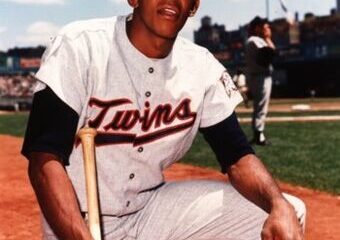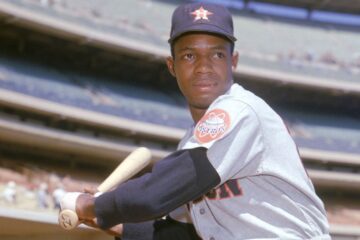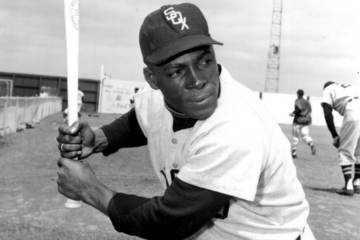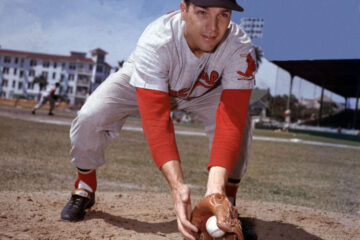The Hall of Fame Index: Who is the most qualified shortstop out of the Hall of Fame?
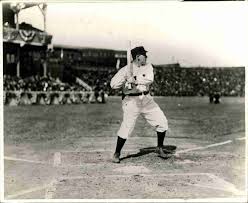
Sometimes the numbers are so overwhelmingly obvious that there is no sense in offering commentary to that end. Bill Dahlen is not only the most qualified shortstop not in the Hall of Fame. Is the most qualified player that is not connected to PEDs or gambling that is not in the Hall of Fame. The numbers we will show here are indisputable. So, why is he not in the Hall of Fame? I wasn’t the first to address this in The Hall of Fame Index Part II and I won’t be the last.
It goes back to the origins of the Hall of Fame. The first class came in 1936. That would be a quarter century after Dahlen quit playing. Most of the members of the press that had seen him play were long since retired or dead. We take statistics for granted in the information age. Even today the information we have is incomplete. We can only imagine how incomplete it was when the Hall of Fame first opened.
They tried to rectify the situation with an Old Timers Committee, but they were bound to leave out some folks. In many cases they just didn’t understand what we understand about value. Of course, that presents a problem as we will get to when we start breaking down the numbers. Unfortunately, it’s not as simple as just putting him in.
Career Value
| BWAR | FWAR | WS/5 | Total | |
| Bill Dahlen | 75.3 | 77.5 | 78.8 | 231.3 |
| Jack Glasscock | 61.6 | 60.1 | 52.2 | 173.9 |
| Bert Campaneris | 53.1 | 44.9 | 56.0 | 154.0 |
| Jim Fregosi | 48.7 | 44.2 | 52.2 | 145.1 |
Dahlen’s day in court could conceivably come. Bill James arguably very passionately for George Davis in his book “Whatever Happened to the Hall of Fame.” His candidacy gained steam and he was finally admitted in 1998. That would be more than ten years after that book was published. These things take time. They take time because the Hall of Fame is biased towards living players. That makes perfect sense. There is nothing sadder than someone getting the honor just after they pass on.
There are also real economic considerations as well. The induction ceremony is a huge money maker for the Hall of Fame. Thousands of fans make the pilgrimage to the Cooperstown to hear their heroes give their speech. Dahlen retired in 1911. His children are dead. He might have living grandchildren. It’s more likely that his great grandchildren would accept the honor on his behalf. Only a few diehard historians and stat geeks have heard of Dahlen.
He had more than 2400 hits and scored nearly 1600 runs. He stole more than 500 bases, but numbers like the ones above are more instructive. They didn’t have the numbers until this century and by then there were bigger fish to fry. Unfortunately, I don’t have the brilliance or juice that James has, so it will take a lot more than me.
Peak Value
| BWAR | FWAR | WS/5 | Total | Index | |
| Dahlen | 47.2 | 49.3 | 45.8 | 142.3 | 373.6 |
| Glasscock | 50.8 | 49.8 | 37.8 | 138.4 | 312.3 |
| Campaneris | 46.8 | 40.2 | 41.0 | 128.0 | 282.0 |
| Fregosi | 46.0 | 42.2 | 45.2 | 133.4 | 278.5 |
Before I started this series, I had to answer the hard question of whether to include steroid cheaters in the breakdown. If I include the likes of Barry Bonds and Roger Clemens then Dahlen wouldn’t qualify for the top spot. Simply put, the idea of this series was to highlight the player that was most obviously overlooked and deserves to be in next. You can’t go there when you have a significant ethical and moral debate. So, my elimination of those players (Alex Rodriguez will eventually be there at shortstop) is not a statement of where I stand on the issue, but simply a way to avoid the debate.
To put it simply, when those qualifiers are included Dahlen is the most qualified player not in the Hall of Fame according to the index. The other three are a distant afterthought. Glasscock is of course even older than Dahlen. I could go into some index issues that accompany him that don’t accompany even Dahlen, but it is more cosmetic when you look at the distance between them.
Some will trumpet Campaneris and Fregosi because they are fresher in the minds of living fans. Others will peg Dave Concepcion because of his connection with the Big Red Machine. If we are committed to the notion that the most qualified candidate on the outside looking in should be the one that gets the next nod then we have to elect Dahlen.
Offensive Numbers
| OPS+ | Rbaser | OW% | wOBA | |
| Dahlen | 110 | 12 | .578 | .357 |
| Fregosi | 113 | 9 | .573 | .331 |
| Glasscock | 112 | 16 | .574 | .336 |
| Campeneris | 89 | 57 | .465 | .298 |
The offensive and fielding numbers offer a great look at players in the aggregate, but it misses the element of time. How long did the player do this for? Dahlen’s career lasted 20 years, so when you consider the above numbers over two decades you can begin to imagine why he accumulated so much value. That is the difference between Dahlen and Fregosi and Glasscock. He just did it longer than they did.
Camaneris numbers are not necessarily meant to eliminate him from consideration. Certainly, players like Ozzie Smith were not gifted offensive players comparatively. We’ve already covered the likes of Luis Aparicio and Rabbit Maranville and you will see a lot more in the book. What we also note is that he will have a lot to make up.
Fielding Numbers
| Rfield | DWAR | TZSS | DWS/5 | |
| Glasscock | 149 | 22.3 | 153 | 18.0 |
| Dahlen | 139 | 28.5 | 120 | 28.6 |
| Campaneris | 63 | 21.1 | 71 | 20.2 |
| Fregosi | 3 | 7.9 | 24 | 12.3 |
DWAR and defensive win shares offer us a look at the element of time. Glassock was arguably better when he was at his best than when Dahlen was at his, but Dahlen did it longer and durability deserves some consideration. The math dictates that players closer to the beginning of the game saw greater separation between them and the average. Simply put, the overall quality of the league wasn’t there. So, a good player looked dominant.
So, even though we are comparing players with the average from their own time, we have difficulty extrapolating those numbers when we compare them to players from a different era. If we threw in George Davis in here we would see something similar to Glassock and Dahlen. It is fair to wonder how many really good shortstops there could be from any one period.
Campaneris was good defensively, but when compared to those in the Hall of Fame he comes up a bit short. He is better than some shortstops in the Hall of Fame defensively, but when you consider the combined value of his offensive and fielding contributions it just doesn’t quite meet the level we are looking for. Then again, we know he is a prominent member of those 1970s Oakland Athletics teams so maybe there is something there.
Playoff Numbers
| PA | SLASH | HR | Runs | RBI | SB | |
| Campaneris | 159 | .243/.290/.247 | 3 | 15 | 11 | 10 |
| Dahlen | 18 | .000/.167/.000 | 0 | 1 | 0 | 3 |
| Glasscock | — | —/—/— | — | — | — | — |
| Fregosi | — | —/—/— | — | — | — | — |
We’ve discussed this before and we will discuss it again in future articles. How exactly do we treat postseason performance. Campaneris was a part of three consecutive championships in Oakland. Some might claim were the best team from the 1970s. I imagine the Reds and Yankees would have something to say about that, but it’s hard to argue with team success. Still, that’s team success. His .537 OPS in the postseason can hardly be seen as a huge part of that success. Yet. Key hits in key moments can linger for a lifetime.
Dahlen didn’t have any key hits because he didn’t have any hits. 18 plate appearances amounts to four games worth of plate appearances. Every player has gone four games without collecting a hit. In fact, they probably do that almost every month. So, how much do we put in four games worth of postseason performance?
Glasscock and Fregosi are a more difficult question. Do we punish them for being on bad teams? Some people would claim that if they were better their teams would have won more games. That’s literally true, but it is also true that if you stuck them on a better team their careers would likely look much different. That cuts both ways.
BWAR MVP Points
| Top 10 | Top 5 | MVP | Points | |
| Glasscock | 4 | 4 | 1 | 42 |
| Dahlen | 3 | 5 | 0 | 34 |
| Fregosi | 3 | 3 | 0 | 24 |
| Campaneris | 2 | 2 | 0 | 16 |
One of the knocks on Dahlen was that he was always good, but he was rarely ever great. That becomes clear when we compare him with Glasscock. I think we have to keep in mind the differences between them in terms of the index. There is a huge gap, so it would be foolish to claim Glasscock was better on the basis of the MVP test. However, it is a point in Glasscock’s favor when it comes time to consider him on his own merits.
Five seasons in the top five in the league is still quite good even if Dahlen was never the top player in the league. If anything the results make Fregosi look a lot better. Some would claim he deserves a spot in Cooperstown for combined achievement as a player and manager. He won over 1000 games as a manager including a pennant in 1993 with the Phillies. Still, he finished with a sub .500 record as a manager and that one pennant isn’t overwhelming.
Still, it’s not a completely stupid argument. There are a few people that fit the mold of good player and good manager that are in the Hall of Fame. Red Schoendienst comes to mind and Joe Torre probably fits that bill as well (although I’d say he’s better than good on both counts). So, a vote for Fregosi on that level wouldn’t be completely out of left field.


